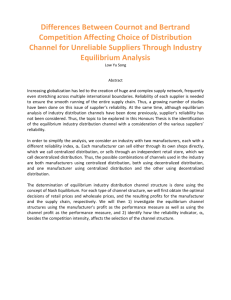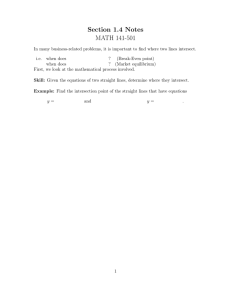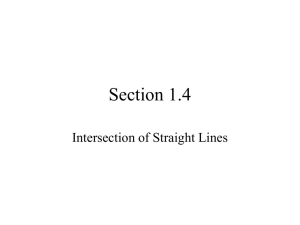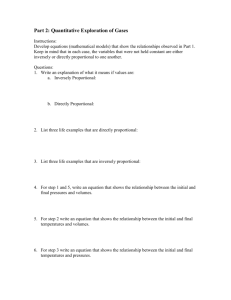1.4. Functional Models Mathematical Modeling
advertisement
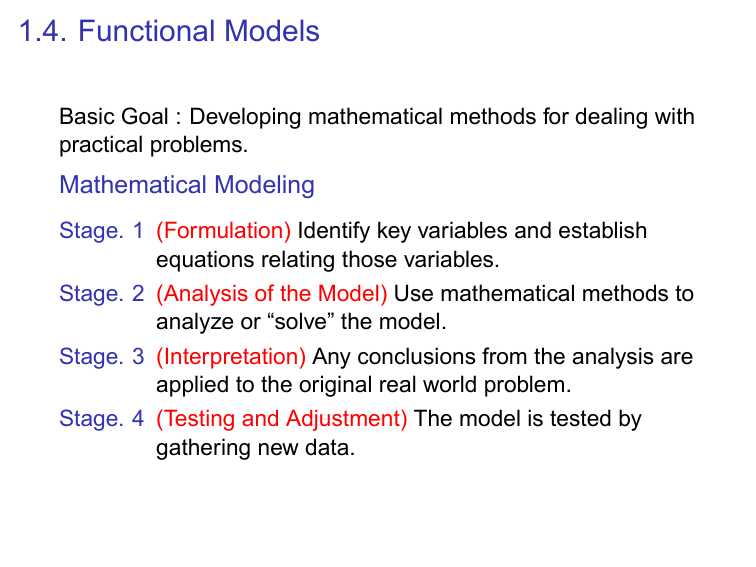
1.4. Functional Models Basic Goal : Developing mathematical methods for dealing with practical problems. Mathematical Modeling Stage. 1 (Formulation) Identify key variables and establish equations relating those variables. Stage. 2 (Analysis of the Model) Use mathematical methods to analyze or “solve” the model. Stage. 3 (Interpretation) Any conclusions from the analysis are applied to the original real world problem. Stage. 4 (Testing and Adjustment) The model is tested by gathering new data. Elimination of variables Example The highway department is planning to build a picnic area along a major highway. It is to be rectangular with an area of 2000 square yards and is to be fenced off on the three sides not adjacent to the highway. Express the number of yards of fencing required as a function of the length of the unfenced side. Proportionality The quantity Q is said to be: ◮ directly proportional to x if Q = kx for some constant k ◮ inversely proportional to x if Q = k/x for some constant k ◮ jointly proportional to x and y if Q = kxy for some constant k Example At a certain factory, setup cost is directly proportional to the number of machines used and operating cost is inversely proportional to the number of machines used. Express the total cost as a function of the number of machines used. Modeling in Business and Economics Example A closed box with a square base is to have a volume of 250 cubic meters. The material for the top and bottom of the box costs $2 per square meter, and the material for the sides costs $1 per square meter. Express the construction cost of the box as a function of the length of its base. Market Equilibrium Demand function D(x): the unit price at which all x units are demanded (sold) in the marketplace. Supply function S(x): the unit price at which producers are willing to supply x units to the marketplace. The Law of supply and demand ◮ In a competitive market environment, supply tends to equal demand. ◮ When this occurs, the market is said to be in equilibrium. ◮ The corresponding unit price is called the equilibrium price. ◮ The market has a shortage when demand exceeds supply. ◮ The market has a surplus when supply exceeds demand. Market Equilibrium Example Supply function and demand function for a particular commodity are given as follows: S(x) = 4x + 200 and D(x) = −3x + 480 (a) Find the value of xe for which equilibrium occurs and the corresponding equilibrium price pe . (b) Sketch the graphs of the supply and demand curves. (c) For what values of x is there a market shortage? A market surplus? Break-even analysis The point at which the total revenue curve and the total cost curve cross is called the break-even point. Example A furniture manufacturer can sell dining room tables for $70 a piece. The manufacturer’s total cost consists of a fixed overhead of $8,000 plus production costs of $30 per table. (a) How many tables must the manufacturer sell to break even? (b) How many tables must the manufacturer sell to make a profit of $6,000? (c) What will be the manufacturer’s profit or loss if 150 tables are sold? (d) Graph the manufacturer’s total revenue and total cost function. Explain how the overhead can be read from the graph.
